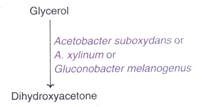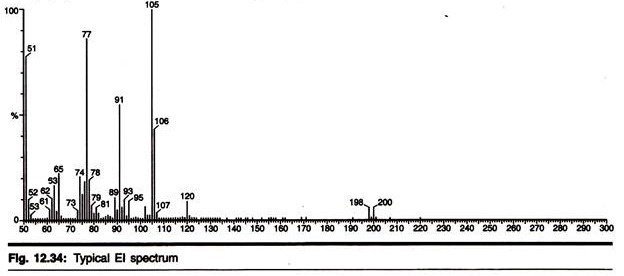ADVERTISEMENTS:
The following points highlight the three main types of connective tissues. The types are: 1. Connective Tissue Proper 2. Skeletal Tissues 3. Vascular Tissues.
The connective tissue; serve to support the body, and bind other tissues and organs together. In contrast to the epithelium, in which cells are abundant and the intercellular ground substance is practically wanting, the connective tissues possess only few cells but considerable amount of intercellular matrix.
Depending upon the nature of the ground substance, three types of connective tissues can be recognised:
ADVERTISEMENTS:
(1) Connective tissue proper,
(2) Skeletal tissues, and
(3) Vascular tissues.
(1) Connective Tissue Proper:
ADVERTISEMENTS:
Connective tissue proper includes the areolar and fibrous tissues both of which are mainly concerned with binding parts of the animal body. The areolar tissue forms a continuous layer beneath the skin and is employed as an effective packing material to fill up gaps between organs. It is composed of a thin jelly-like ground substance in which are scattered a few cells.
Fine fibres form an interlacing network throughout the matrix, and the cells arc contained within the meshes of the fibres. The cells lying in the ground substance are principally of two kinds—the fibroblasts which secrete the fibres, and the amoeboid matrix cells which probably secrete the jelly.
The fibres, too, are of two types: slender yellow fibres, branching freely and joining up to form the elastic network, and the wavy white fibres arranged in bundles which yield gelatin when boiled (Fig. 174).
Fibrous tissue forms ligaments and tendons which help in connecting the framework of the body. It also forms sheets for enclosing muscles. As its name signifies, it is composed mainly of fibres. Adipose tissue is a kind of areolar tissue containing fat cells.
(2) Skeletal Tissues:
Skeletal tissues include cartilage and bone which form the vertebrate endoskeleton. Cartilage is popularly known as the gristle. It is a rigid and elastic connective tissue which can resist compression and absorb mechanical stress.
Cartilage consists of a ground substance or matrix which is typically composed of an organic matter called chondrin. The cartilage cells secreting the matrix are embedded in spaces known as the lacunae (singular —lacuna). The cells usually occur in groups of two or four, and they have a tendency for multiplying. The entire cartilage is surrounded by a tough coat of fibrous areolar tissue called perichondrium.
There are several kind, of cartilage, the commonest and simplest being hyaline cartilage. In this the matrix is clear and homogeneous. In elastic cartilage the matrix is permeated with innumerable elastic fibres, and in white fibro-cartilage the matrix is densely packed with way white fibres running in bundles.
ADVERTISEMENTS:
Costal cartilage in mammals and the cartilage covering joints are hyaline cartilages, whereas the pinna of the ear is composed of elastic cartilage.
Bone is a hard connective tissue of great strength, offering greater resistance to pressure and to bending stress than the cartilage; but it is less resilient, that is, it does not spring back when released from a stress. Like other connective tissues, bone is composed of cells and of intercellular matrix.
The ground substance or matrix is the hard material of the bone; it always contains calcium phosphate. The bone tells are arranged in regular pattern inside lacunae. There is a large central cavity containing bone-marrow.
ADVERTISEMENTS:
This is surrounded by bone lamellae which are arranged in concentric layers. The marrow cavity communicates with smaller channels called Haversian canals, around which are arranged further lamellae and lacunae, thus forming elongated cylinders called Haversian systems.
The lacunae are connected with one another by narrow canaliculi. The bone cells or osteoblasts are spider-shaped. They send out fine protoplasmic processes through the canaliculi and these interlace with others from adjacent lacunae. The entire bone is surrounded by a fibrous sheath known as the periosteum, which carries blood vessels to the interior of the marrow cavity.
(3) Vascular Tissues:
ADVERTISEMENTS:
Vascular tissue includes blood, lymph and the structures in which these fluids are formed, stored and destroyed. But in the following paragraph only blood will be described. Blood differs from all other tissues in consisting of a liquid matrix or blood plasma, in which blood corpuscles are suspended.
It must be noted that the plasma is not a product of the corpuscles. It is a straw-coloured liquid consisting of an aqueous solution of salts and organic substances. Floating in the plasma are the blood corpuscles.
The red corpuscles or erythrocytes contain a red pigment, called haemoglobin. In mammals, each red corpuscle is a biconcave, non-nucleated disc about 7.5 µ m in diameter. In fishes and amphibians, however, these are oval, biconvex and nucleated.
There are about 5 millions of erythrocytes in a cu. mm. of human blood, The white corpuscles or leucocytes are larger and less numerous. They are devoid of haemoglobin and they have a nucleus which may be of irregular shape.
ADVERTISEMENTS:
Number of leucocytes varies from 6 to 8 thousand per cu. mm. in human blood. Some of the leucocytes are phagocytes, devouring bacteria with their pseudopodia. The thrombocytes or blood platelets are numerous small cells of irregular shape which help in the clotting of blood.



